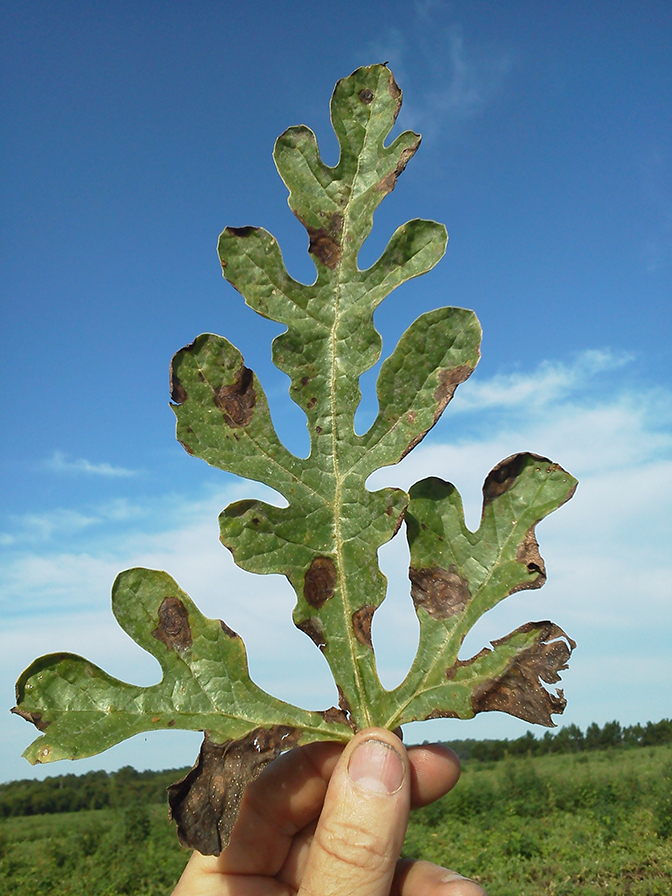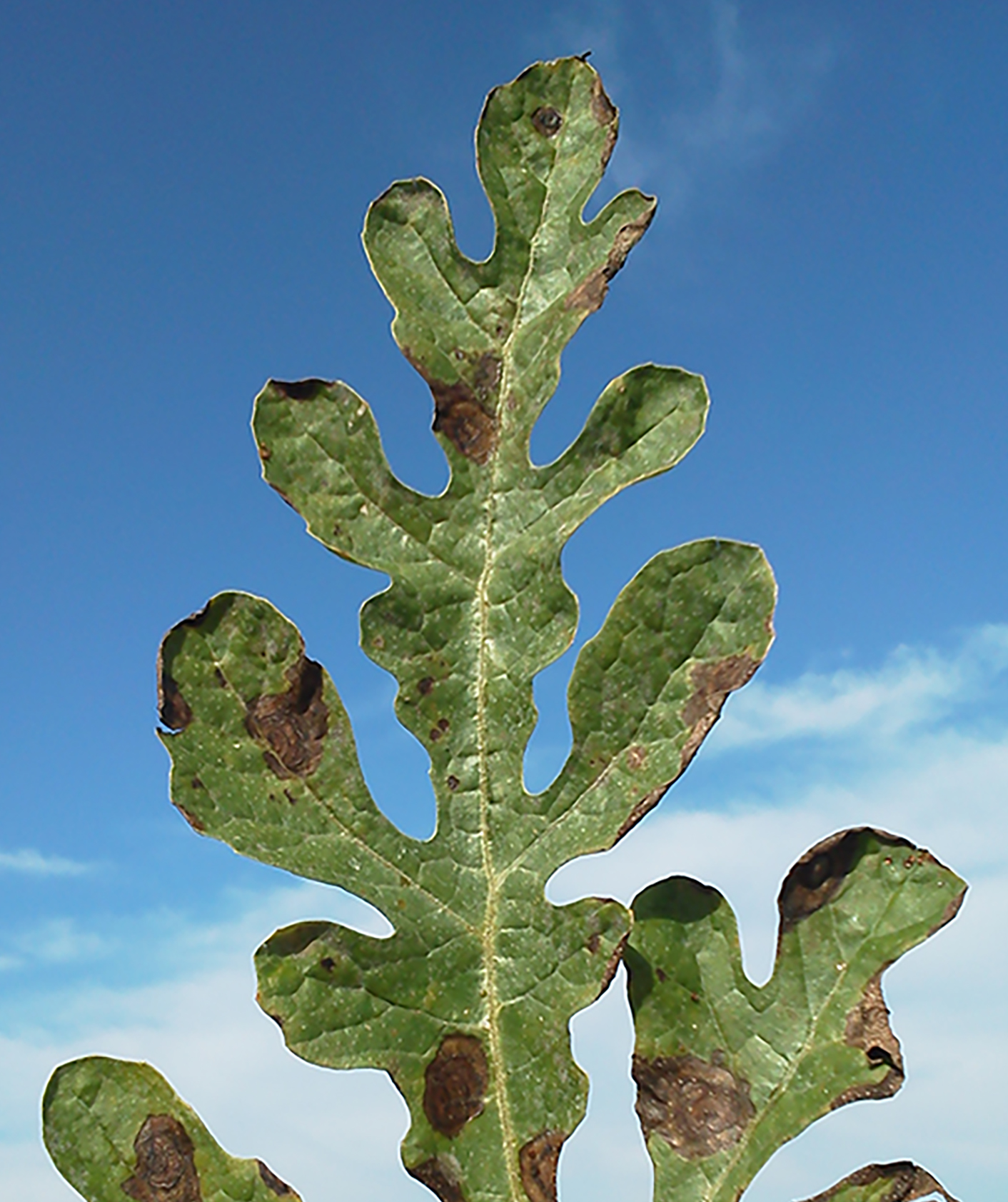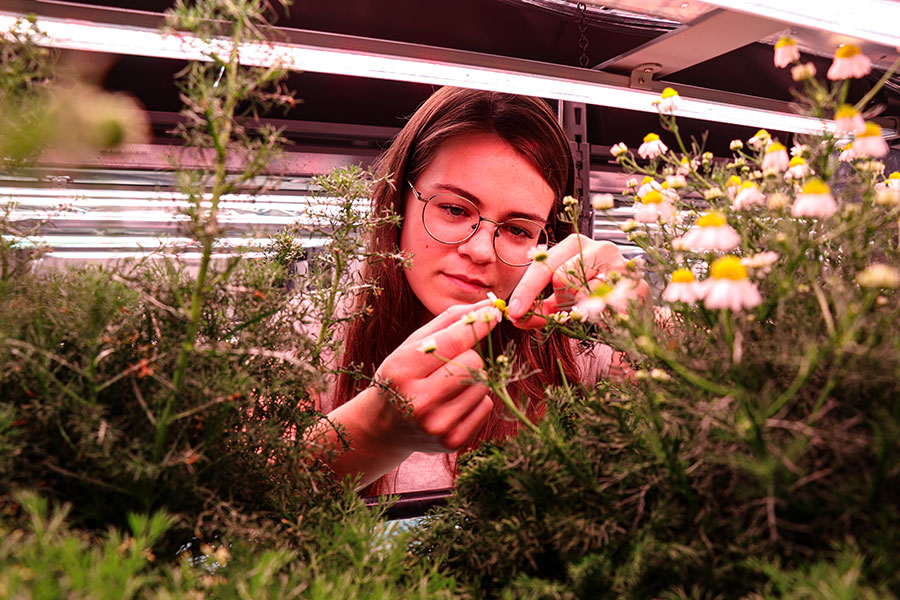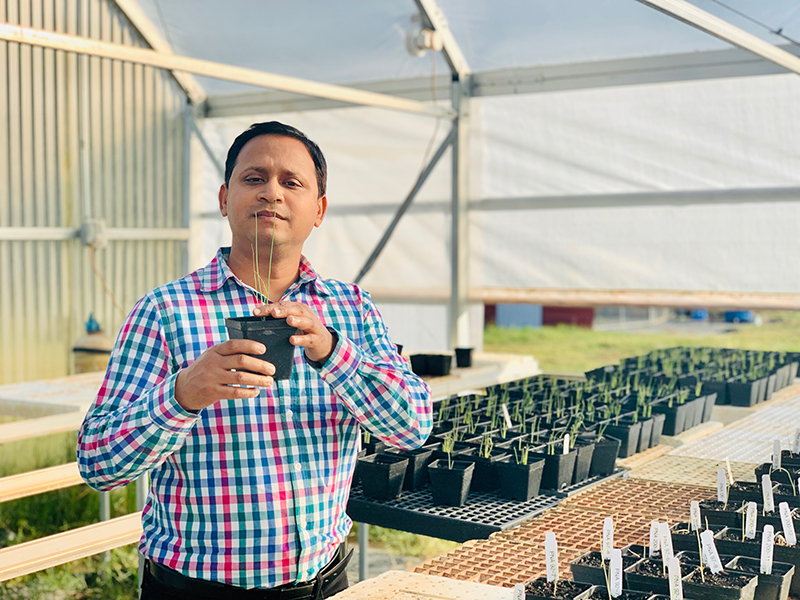Disease in south Georgia’s watermelons was again a problem this year for farmers.
Georgia producers were impacted by fusarium wilt as well as some gummy stem blight this growing season, according to University of Georgia Cooperative Extension vegetable horticulturist Tim Coolong.
“As far as having an impact on farmers’ bottom line, fusarium wilt was probably a bigger issue than gummy stem blight,” said Coolong, who classified this year’s crop as “average to good” for Georgia’s producers. “Fusarium wilt was a significant issue across the board, and there’s really not a lot of control options for that disease, especially if there is a race present for which there is no varietal resistance.”
There are multiple “races” of fusarium wilt. Resistance is available for race 1 of fusarium wilt, but Georgia farmers have race 2 in many fields and “there’s no resistance for that right now,” he said.
Fusarium wilt is a soil-borne disease. Not all farmers have to deal with fusarium wilt, but those who do suffer significant losses, particularly early in the season.
“Farmers who have been growing watermelons a long time typically have the pathogen that causes fusarium wilt in some of their fields. When they have it, there’s not a whole lot they can do about it,” Coolong said.
Gummy stem blight is typically a problem for watermelon farmers as well, especially in Cook County, Georgia, where almost 1,000 acres are produced every year. Tucker Price, the UGA Extension agricultural and natural resources agent in Cook County, said diseases had little impact on the crop in his county because farmers responded with timely and proactive fungicide applications.
“I think if you have watermelons, you’re going to see gummy stem blight at some point. The ideal environment to see as little as possible involves any kind of weather that keeps moisture off the leaves. A good drip irrigation system, with no rain, that would be an ideal environment, if there was such a thing,” Price said. “Early reports of yields this year look pretty good."
Unlike other diseases for which impact can be predicted, gummy stem blight is a major problem because it can occur without warning. The fungal disease causes lesions on leaves and causes stems to exude a gummy material. It thrives in warm, wet conditions, much like what south Georgia experienced all summer.
“It can damage leaves and the whole vine. If you don’t have vines, you don’t have watermelons,” Price said. “It is the disease that most of the watermelon fungicide programs are based on controlling.”
UGA vegetable plant pathologist Bhabesh Dutta said management of gummy stem blight can be a “difference maker” because of the disease’s widespread impact.
“Although cultural practices like deep turning of host debris, crop rotation and avoiding overhead irrigation help manage the disease to some extent, protective fungicide application is by far the most effective method for the management of gummy stem blight,” Dutta said.
Price conducted watermelon fungicide trials on gummy stem blight this season and found most gummy stem fungicides worked well to control the disease. “But the vines where fungicides were applied that focused on gummy stem blight didn’t last long after downy mildew started coming in,” he said.
Despite gummy stem blight’s impact, Price warns growers not to overlook other diseases.
“I think we sometimes get blinders on and look at just gummy stem. Whenever you spray watermelons with fungicides, you’re always proactive. You’ve got to stay one step ahead of it,” Price said. “Whenever we put out a fungicide spray for gummy stem, we need to put something else in there for anthracnose, downy mildew, powdery mildew and anything else that might come up. We’ve got to be careful not to get blindsided when getting so focused on one disease.”
Watermelons accounted for 14.4 percent of Georgia’s vegetable production in 2013, according to the UGA Center for Agribusiness and Economic Development, $143.7 million in farm gate value. Of that, Cook County recorded $8.8 million in farm gate value from watermelons.








